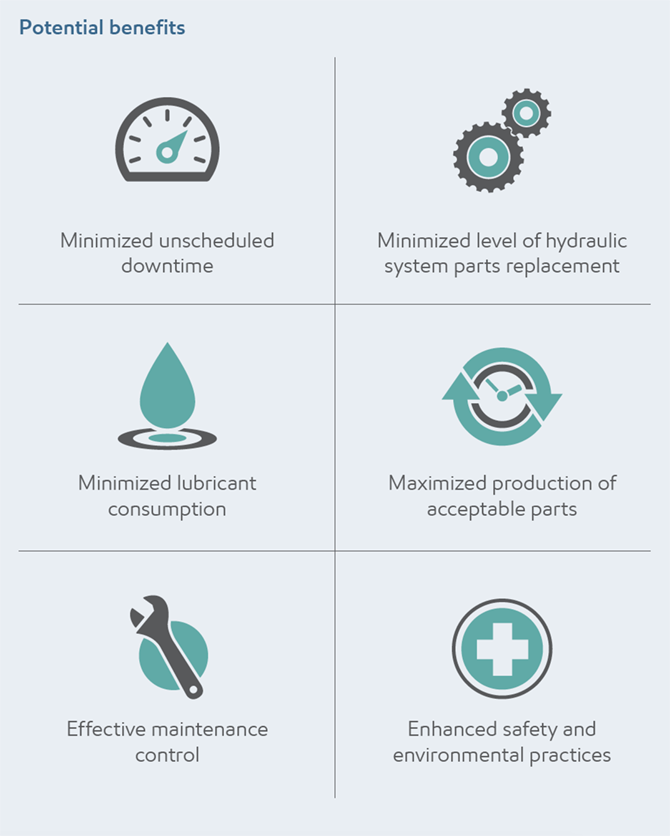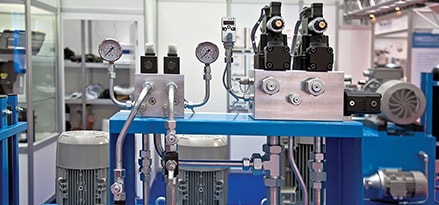Description
Our engineers inspect, report and document the condition of your critical plant hydraulic systems. They use hydraulic inspection data to establish the optimum time to replace critical hydraulic shovel components such as pumps, valves, heat exchangers, filters and industrial lubricants — and then recommend hydraulic maintenance practices to help improve system reliability.
Our engineers inspect, report and document the condition of your critical plant hydraulic systems. They use hydraulic inspection data to establish the optimum time to replace critical hydraulic shovel components such as pumps, valves, heat exchangers, filters and industrial lubricants — and then recommend hydraulic maintenance practices to help improve system reliability.
Application
We work with you to:
We work with you to:
- Understand current industrial lubrication practices, equipment life and improvement opportunities
- Develop a schedule of periodic hydraulic system
inspections - Inspect components and breather condition
- Record reservoir oil temperatures and obtain system
oil samples - Evaluate system fluid cleanliness levels
- Compare results to identify changes and trends
- Target a set Hydraulic Fluid Index, HFI
Deliverable: An Engineering Service Report outlines the condition of the hydraulic systems inspected, recommended actions of hydraulic maintenance to improve performance/reliability and estimated value of the service rendered.
Common opportunity areas
- Contaminated industrial lubricant
- Hydraulic system temperature too high or low
- Aeration of oil (foaming)
- Shock loading in system
- Hydraulic pressures too high
- Restriction in pump suction
- Inadequate filtration or maintenance practices
- Hose condition (where applicable)
- Leakage rates too high; low oil levels
Safety, health and environment
Our field engineers are attuned to the hazards of handling, storing and using petroleum products. They strictly observe safety and environmental rules, as well as ExxonMobil and customer safety practices. They coordinate efforts through designated plant personnel verifying electrical and mechanical lockout and proper tagging prior to working on equipment, and providing recommendations to help reduce hazards.
Our field engineers are attuned to the hazards of handling, storing and using petroleum products. They strictly observe safety and environmental rules, as well as ExxonMobil and customer safety practices. They coordinate efforts through designated plant personnel verifying electrical and mechanical lockout and proper tagging prior to working on equipment, and providing recommendations to help reduce hazards.


